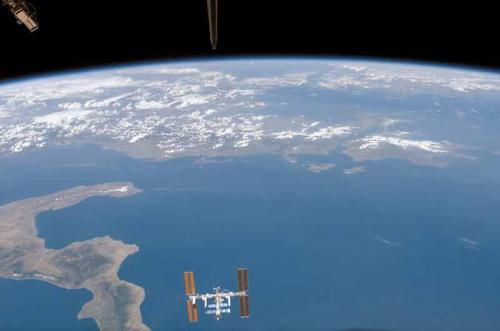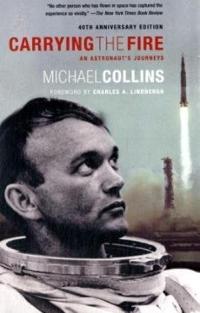= ASTRONAUTICAL EVOLUTION =
Issue 99, 26 January 2014 – 45th Apollo Anniversary Year
=============== AE ===============
Neubrandenburg Thoughts (II): Space for Peace
Stephen Ashworth, Oxford, UK
What are the benefits of manned spaceflight?

When Shuttle astronaut Lodewijk van den Berg, who flew on Challenger in 1985, spoke about his mission to the audience at Neubrandenburg last month, he described his experience of the “overview effect” (named by Frank White in his 1987 book of that title). Beijing, he said, looks the same as San Francisco from orbit, and you fly from one to another in a matter of minutes. National and racial rivalries evaporate in the astronaut’s-eye view of Earth as a single planet which we all share.
Now listen to Canadian astronaut Chris Hadfield saying exactly the same thing in a recent BBC interview: “You lose your sense of ‘them’ when you're going around the world 16 times a day for half a year… you see the world as one place and realise we’re all kind of in this together.” (More press reports on Hadfield’s comments on space and peace at Space.com and Discovery.com.)
So what’s the logical conclusion? Isn’t it that one of the profoundest benefits to humanity is the chance of raising a new class of political and economic leaders whose view of humanity has been shaped by the view of Earth from space.
Would, for example, war be possible between nations led by astronaut-politicians? Surely we can hope that in the enlightened future no politician will be taken seriously, or allowed to take decisions affecting millions of people’s lives, unless and until that individual has personally experienced an educational space cruise?
International peace negotiations and environmental conferences, too, would best be held in orbiting conference centres – an idea suggested by White. But the best location for an orbital conference centre would not be in low Earth orbit, but in a highly elliptical orbit which approaches Earth to within a few hundred kilometres before going out to a perigee at least halfway to the orbit of the Moon, as Apollo 11 astronaut Michael Collins says in a quotation in White’s book (see bottom of page).
The basic construction materials for such stations are most economically sourced from near-Earth asteroids, and John S. Lewis has shown that highly elliptical orbits are the most efficient Earth-orbit terminus for asteroid mining missions. Highly elliptical orbits are obviously also of interest for passenger transport between Earth and Moon in permanent cycler stations.
But no young politician will want to devote years of his or her life towards training for a space mission conducted the way they are at present. Nor will everyone with an aptitude for or an interest in politics necessarily have the outstanding qualifications in physics and engineering, or the virtually perfect physique, that are at present essential for any government space traveller. The most urgent task for astronautics must therefore be to make manned spaceflight safe enough, easy enough and economical enough that everyday people can visit an orbiting conference centre under conditions closely resembling present-day airline travel on Earth.
I would remind skeptics that at present hundreds of millions of air passengers fly every year at a cruising altitude (in the Airbus A-319 which took me to Germany and back) of 11.3 kilometers (37,000 feet, the pilot told me). The atmospheric pressure at that altitude is a quarter of that on the ground, at which pressure there is insufficient atmospheric oxygen to sustain human life. Concorde regularly flew considerably higher, at 20 km altitude, where the atmospheric pressure is only one fifteenth of what it is at sea level. Space is closer than one might think.
If the overview effect and its logical consequences were to be taken seriously, this would settle the debate between OldSpace and NewSpace, as only the latter can hope to provide the necessary service. Clearly, that debate will continue for a while yet, until either all the NewSpace companies have gone out of business or been absorbed into the government monolith, or exponential growth in numbers of private passengers to orbit overtakes the declining numbers of official astronaut passengers.
I think it would be reasonable to see the number of fare-paying space passengers to orbit per year sustainably overtaking the number of space agency astronauts (currently 15 in a good year) sometime in the 2020 to 2025 period, about when the Skylon spaceplane might be entering service. But how many might be flying by the centenary of Yury Gagarin’s flight, in 2061?
We might modestly envisage two 20-seat vehicles flying to orbit and back per day worldwide, 5 days a week, after 36 years of growth from a starting level of 15 passengers/year in 2025 at a growth rate of 20% per annum. This would mean that the number of people visiting orbit every year by then will have reached at least 10,000.
Using the current 20-seat Skylon design, with each vehicle making two flights per week, this level of traffic would require a global fleet of just five Skylons, plus a few additional vehicles for transporting hotel logistics, government exploration hardware and so on.
If the average staytime in orbit is 10 days per visitor, including turnaround time, there will need to be 300 berths in low Earth orbit hotels, factories and laboratories: say ten stations offering 30 places each. A fraction of those visitors will head further out to Earth-Moon cycler stations in highly elliptical orbits, propelled by fuel mined from near-Earth asteroids or from the Moon.
Obviously, the price of a ticket will have to fall dramatically. Again, we can sketch out a plausible scenario in which prices fall by a factor of 100, from tens of millions of dollars to just hundreds of thousands, while the number of millionaires in the world continues to grow.
By the centenary of Gagarin’s first orbit of Earth, therefore, given sustained growth from the present, we can anticipate a space passenger transport industry developed to the point that our political, business, cultural and religious leaders will be making a regular habit of visiting space. In such a scenario, every politician worth listening to from that point on will be not merely speaking, but even thinking, from a cosmic perspective, no longer a narrowly nationalist, racist or ideologist one.
What, exactly, are NASA, ESA and the other space bureaucracies doing with our money to hasten that day?
From Frank White, The Overview Effect: Space Exploration and Human Evolution (Houghton Mifflin, 1987), p.202-203, interviewing Gemini and Apollo astronaut Michael Collins:

Collins: “I really believe that if the political leaders of the world could see their planet from a distance of 100,000 miles, their outlook would be fundamentally changed. That all-important border would be invisible, that noisy argument suddenly silenced. The tiny globe would continue to turn, serenely ignoring its subdivisions, presenting a united façade that would cry out for unified treatment...
“I think the view from 100,000 miles could be invaluable in getting people together to work out joint solutions, by causing them to realize that the planet we share unites us in a way far more basic and far more important than differences in skin color or religion or economic system. The pity of it is that so far the view from 100,000 miles has been the exclusive property of a handful of test pilots, rather than the world leaders who need this new perspective, or the poets who might communicate it to them.”
White: “Did you find a major difference between your Gemini and Apollo missions?”
Collins: “There is definitely a different feeling. At one hundred miles up, you are just skimming the surface, and you don’t get a feeling for the Earth as a whole. It’s a pity that we have stopped going a greater distance from Earth, as with the Moon missions. By that, I mean 100,000 miles minimum. When you are in orbit, it’s like a roller-coaster ride. On the way to the Moon, that feeling of motion stops. It is definitely two very different elements.
“Also, seeing the Moon up close is really startling. When you are sixty miles away, you realize we are really lucky to be living on Earth. You sort of have to see the ‘second planet’ [the Moon] to appreciate the first [the Earth].”
White: “I mentioned to Joe Allen that I had a vision of a summit conference on the space station, and he thought it was a pretty good idea.”
Collins: “I would like to see political leaders go. I’m not naive in terms of what it would accomplish. But it would be a good idea.”